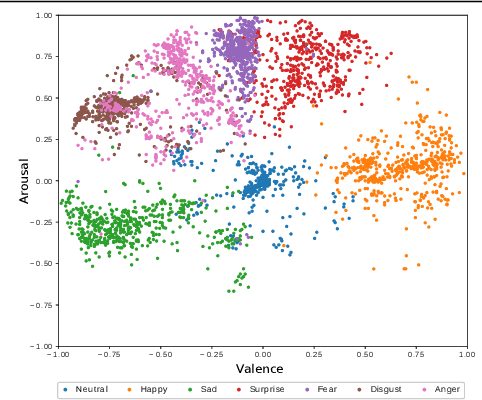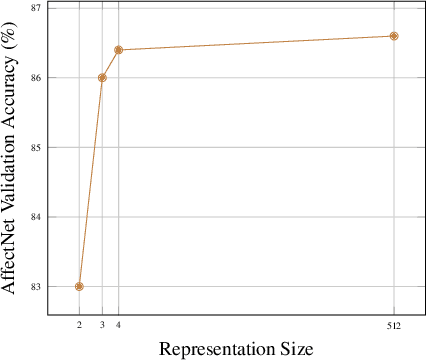CAKE: Compact and Accurate K-dimensional representation of Emotion
Paper and Code
Aug 03, 2018



Numerous models describing the human emotional states have been built by the psychology community. Alongside, Deep Neural Networks (DNN) are reaching excellent performances and are becoming interesting features extraction tools in many computer vision tasks.Inspired by works from the psychology community, we first study the link between the compact two-dimensional representation of the emotion known as arousal-valence, and discrete emotion classes (e.g. anger, happiness, sadness, etc.) used in the computer vision community. It enables to assess the benefits -- in terms of discrete emotion inference -- of adding an extra dimension to arousal-valence (usually named dominance). Building on these observations, we propose CAKE, a 3-dimensional representation of emotion learned in a multi-domain fashion, achieving accurate emotion recognition on several public datasets. Moreover, we visualize how emotions boundaries are organized inside DNN representations and show that DNNs are implicitly learning arousal-valence-like descriptions of emotions. Finally, we use the CAKE representation to compare the quality of the annotations of different public datasets.
 Add to Chrome
Add to Chrome Add to Firefox
Add to Firefox Add to Edge
Add to Edge